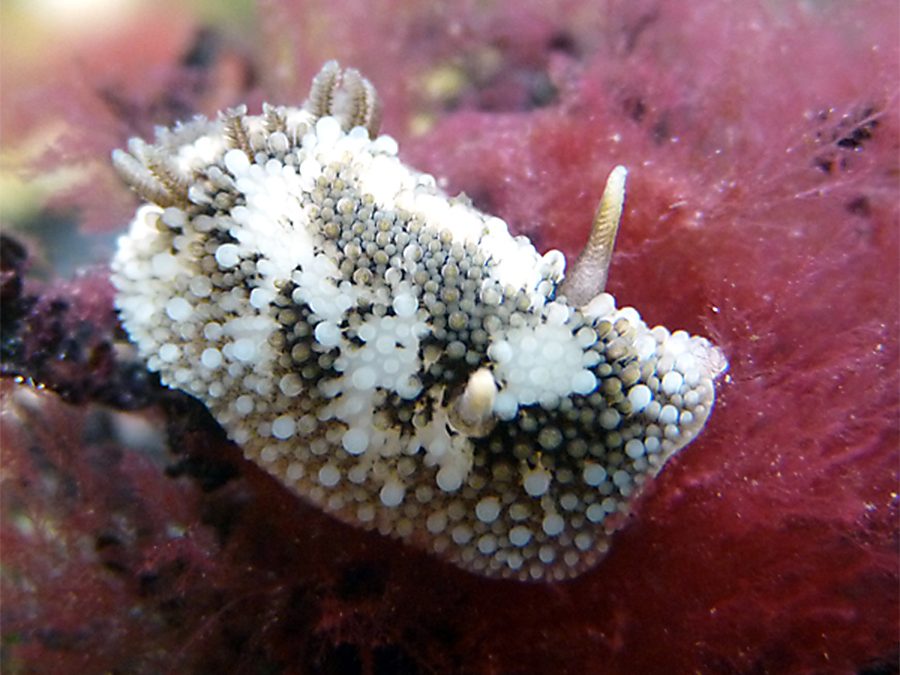
by David Young | Aug 20, 2024 | Molluscs
Author: Hailey Surgin Common Name: Barnacle Eating Dorid, Rough Mantled Dorid Scientific Name: Onchidoris bilamellata Size Range: up to 2cm to 3cm in length Identifying Features: Most barnacle eating dorids have a mottled grey and brown colour to them. Their...


